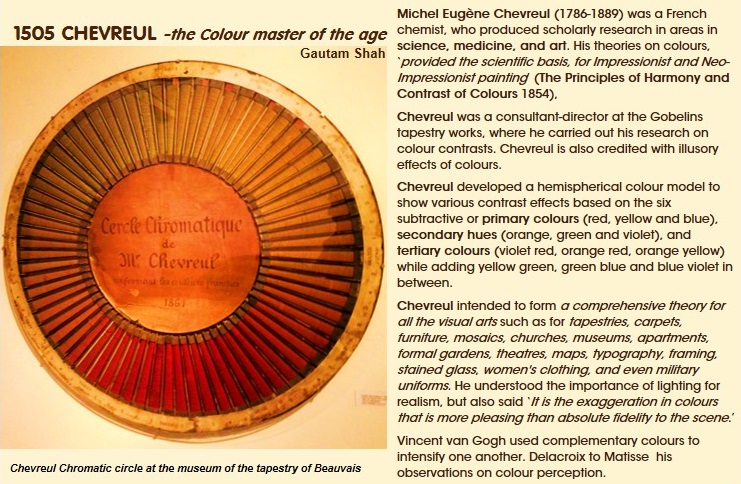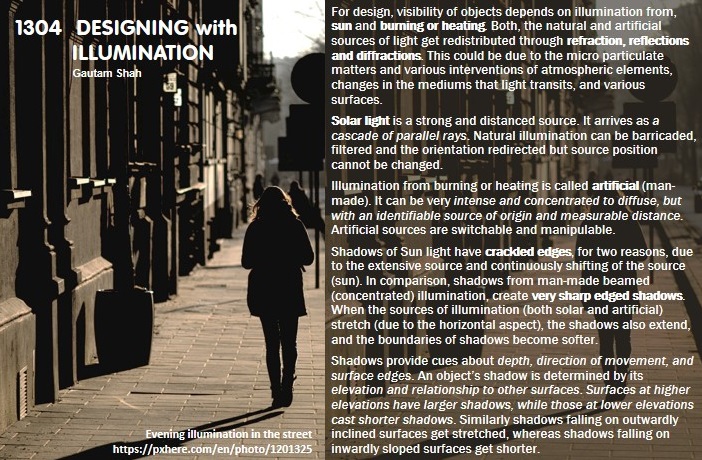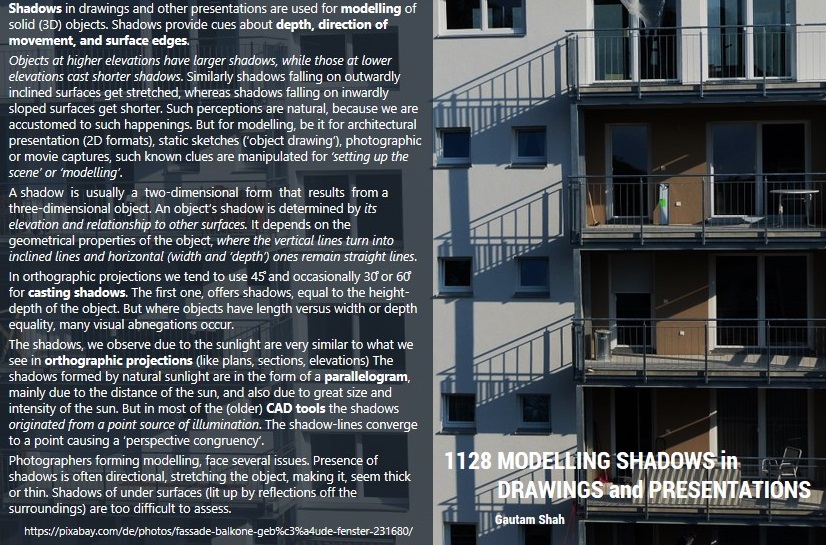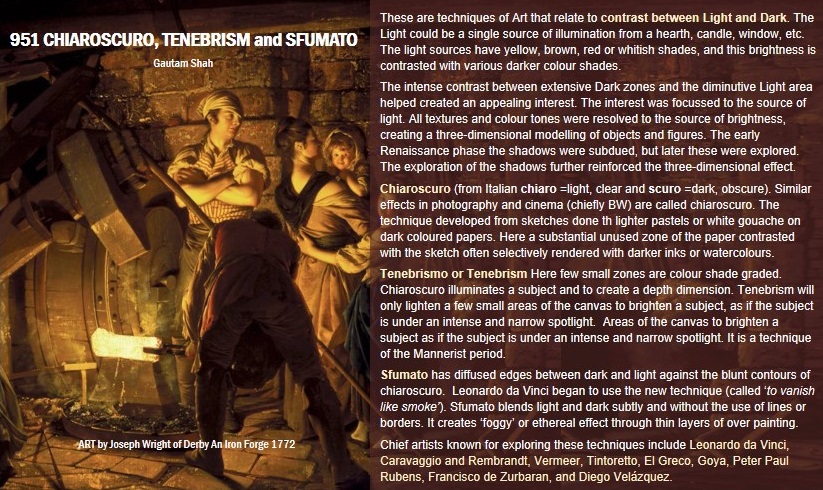1755 COLOUR CONVEYANCE -Gautam Shah
Colours are conveyed with the illumination. But the experiences of colour are also contextual in many manners. A shadow is not always total absence of light, but, can be described as a collection of many darker shades of colours. A shadow occurs with the illumination, and together show off, several versions of lighter and darker shades of the same colour.
Monet believed ‘A Colour owes its brightness to the force of contrast, rather than to its inherent qualities.’ In existing scenarios wide ranges of colour shades are experienced. Ranges of shades are sensed due to factors like, point of observation, experiences of immediate past, proportion of light-dark zones, reflection from surroundings, etc. Monet believed that ‘primary colours look brightest, when they are brought into contrast with their complementaries’, but darker or shadowed versions of the same shades have different scales of contrasts.
The learning of the existing scenario, are not corroborated, when one applies colours for representations like, Art, Architecture, Films, Graphics, Fashion, Stage craft, or Scenography. Here the colour contrasts do not emerge with the illumination or shadows, but are rather formatted, The colours are created for showing the Depth, Visual effects, Thematic compliance, match with intensity of brightness, colours of the Lighting, and to convey Time, season, or mood. In media presentations colour contrasts of light and shadows, are digitally defined, using millions of variations through the software.









